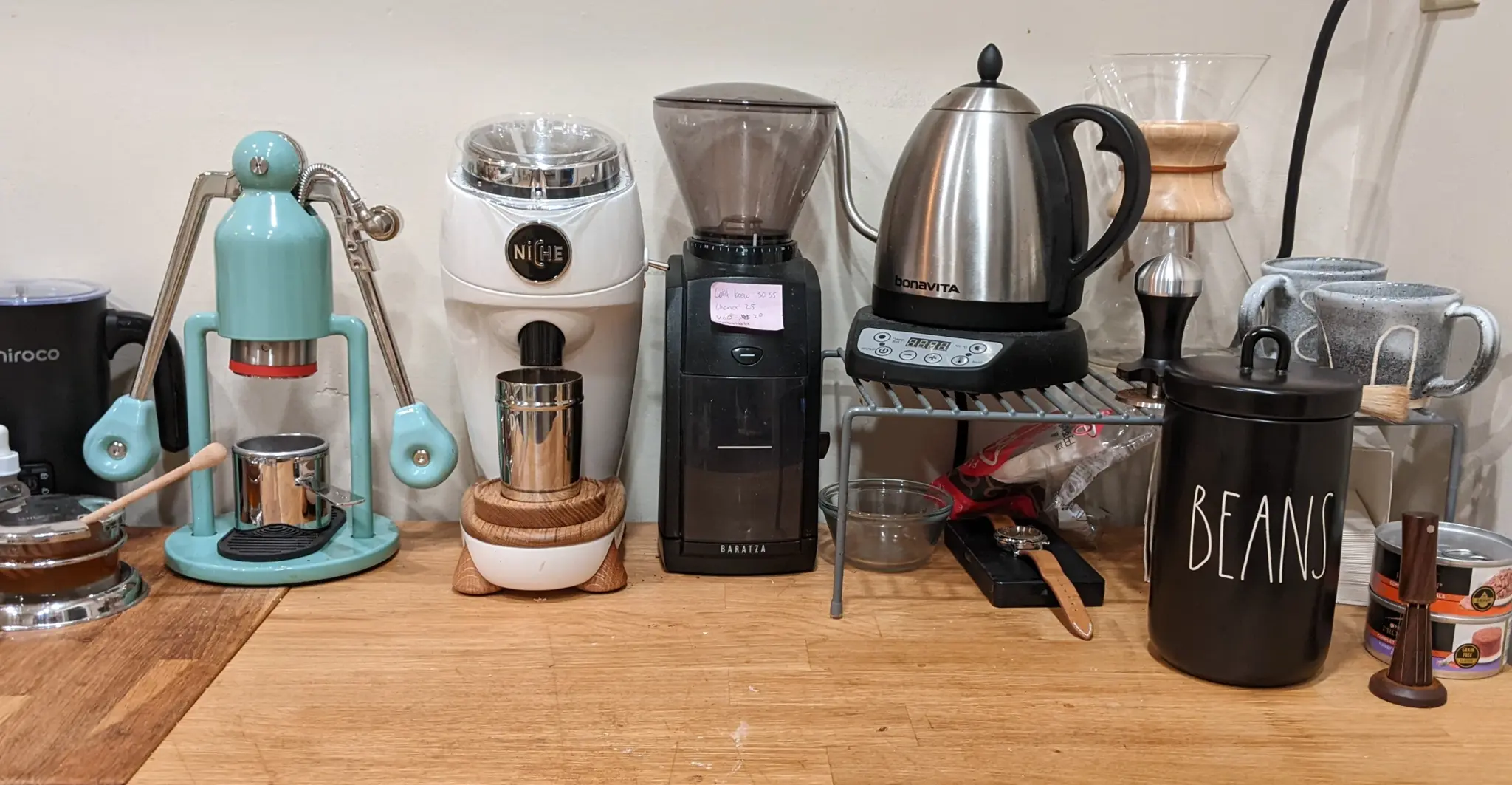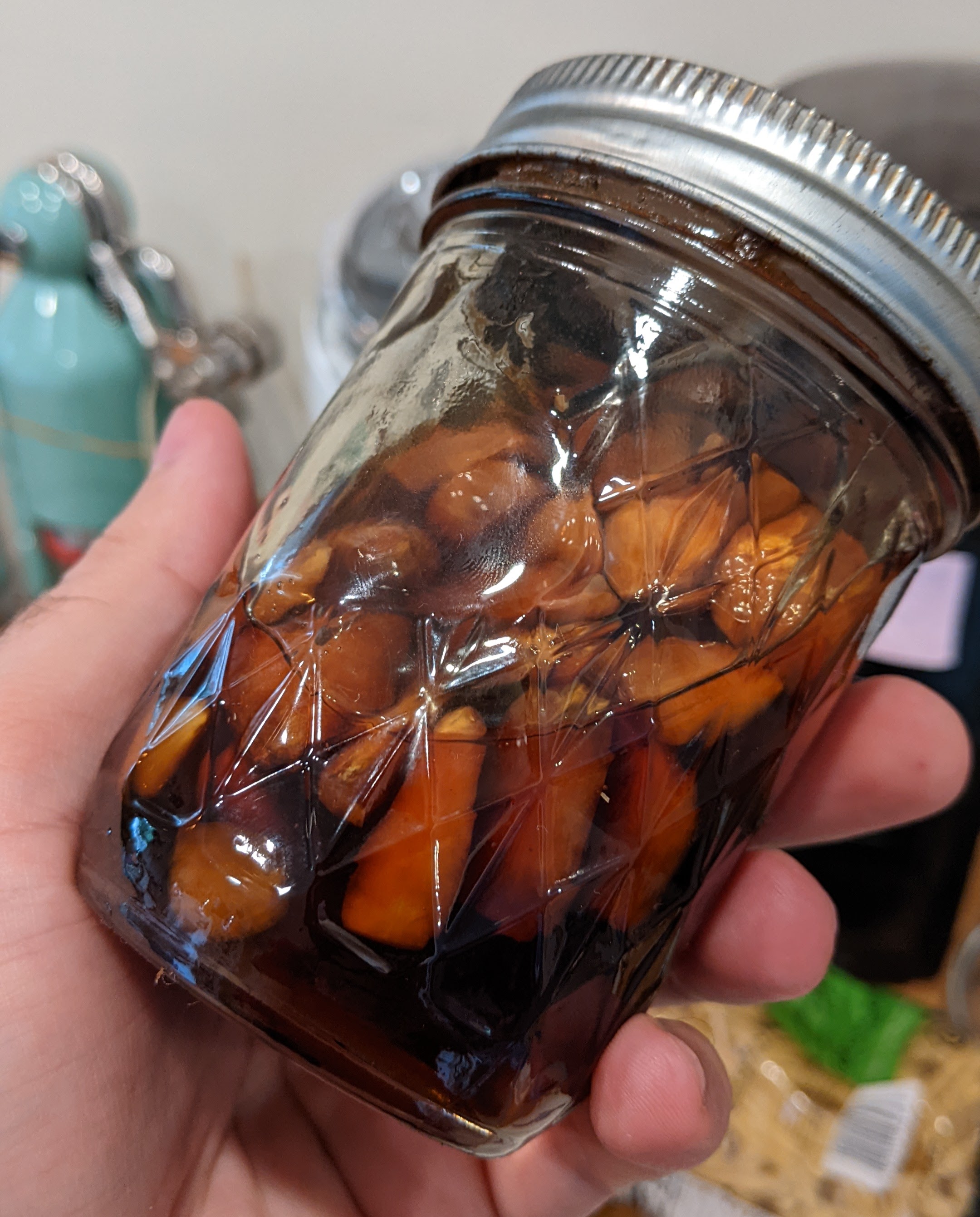

Thank you! I have next to nil artistic ability, so I actually really surprised myself by managing to make something I actually liked with these labels.
Photonics Engineer by day, indie RPG writer by night, especially interested in open/CC games.
See my stuff here: http://awkwardturtle.games


Thank you! I have next to nil artistic ability, so I actually really surprised myself by managing to make something I actually liked with these labels.


Yeah, I don’t know if that tracks. Wingspan has sold more than 1.3 million copies (as of September 2021) which is way way way more than the average board game sells.
I’d far more believe that they couldn’t keep up with production than they were intentionally limiting supply.


Ooo, fantastic. I’ve been doing sugar extractions of lemon zest for a mead recently, and we tried drying and blitzing the zests after filtering.
For us the powder was nice (partly because it got a bit candied during the process) but fairly mild in taste. I think it could still absolutely be fun to use to sprinkle on desserts of drinks, for visuals if nothing else.


Also if you use The Estate box set you have a nice, episodic little campaign pre-built for Mausritter. It’s a small hex crawl with a bunch of pamphlet adventures scattered around them, complete with hooks to tie them all together.
Might be a good ongoing structure, especially if you have an inconsistent group, or intend to be swapping GMs periodically.


I’d love to do so, but the price seems to jump up by an order of magnitude and it’s difficult to justify. I’ll probably be trying a combo of filter + sulfites going forward.


Having recently tried the filtering thing, it’s still a roll of the dice unless you’re using the much more expensive professional grade filters.
It does get your mead clear as hell though, and removes a ton of off flavors.


Our kettle actually partially died a few months ago, had a long debate about what we should replace it with before I realized the contacts on the base had just gotten bent out of place.
A buddy of mine printed the robot mittens for me, and even managed to track down a paint that nearly perfectly matches the color. I absolutely love them. How do you like the metal ones?


Nice! A surprising amount of overlap with out own coffee station!



When in doubt, age it out!
Alternatively you could consider back sweetening, or oaking, to add some extra flavor that might counterbalance it some.


I used Lalvin 71b, and a couple days after pitching it occurred to me that this would have been a great opportunity to use something more suited to purpose.
Honestly different yeasts is something I haven’t really dug into much yet, although I want to. Currently I just have a big stash of 71b and default to that for every mead.


I honestly haven’t really done much stabilizing because I like my meads dry, so I don’t bother backsweetening. From my research KSorb/KMeta is your best as a home brewer, but it has some pitfalls.
Filtering is sorta a huge pain in the ass, and like I said doesn’t even guarantee stabilization unless you go for the professional grade equipment with the “absolute” filter ratings which is pretty dang expensive. Plus you’ll need either pressure, a pump, or gravity and a lot of patience to get it through the smallest sized filters.
My filtering was done with the fairly inexpensive plate filters with “nominal” size ratings, which means it doesn’t promise it’s actually getting everything.
I think fining plus just waiting a very long time for things to settle out gets you about as good of an outcome as filtering, as far as clarity and taste goes, but I’m still experimenting so I can’t say for sure.


I’m no expert, been doing it as a hobby for about five years now, but from my own experience I’ll make a few notes:
It’s fantastic, as simple as just chucking some garlic into a jar with honey. Wait long enough and you get a really nice almost balsamic-y garlicy liquid to drizzle on stuff (I love it on pizza). I’ve also done it with some chopped up habanero included to make it spicy.
Insert usual caveats about being careful with fermenting food at home and doing your own research, and there being a small risk of botulism.

The bochet and berry meads aren’t doing anything super out of the ordinary (well, out of the ordinary if you’re already caramelizing your honey) but the Strawberry Lemonade one is weird enough that I keep meaning to do a full write up about it.
Just gotta actually get around to setting up a blog or website or something so I can host it someplace useful.